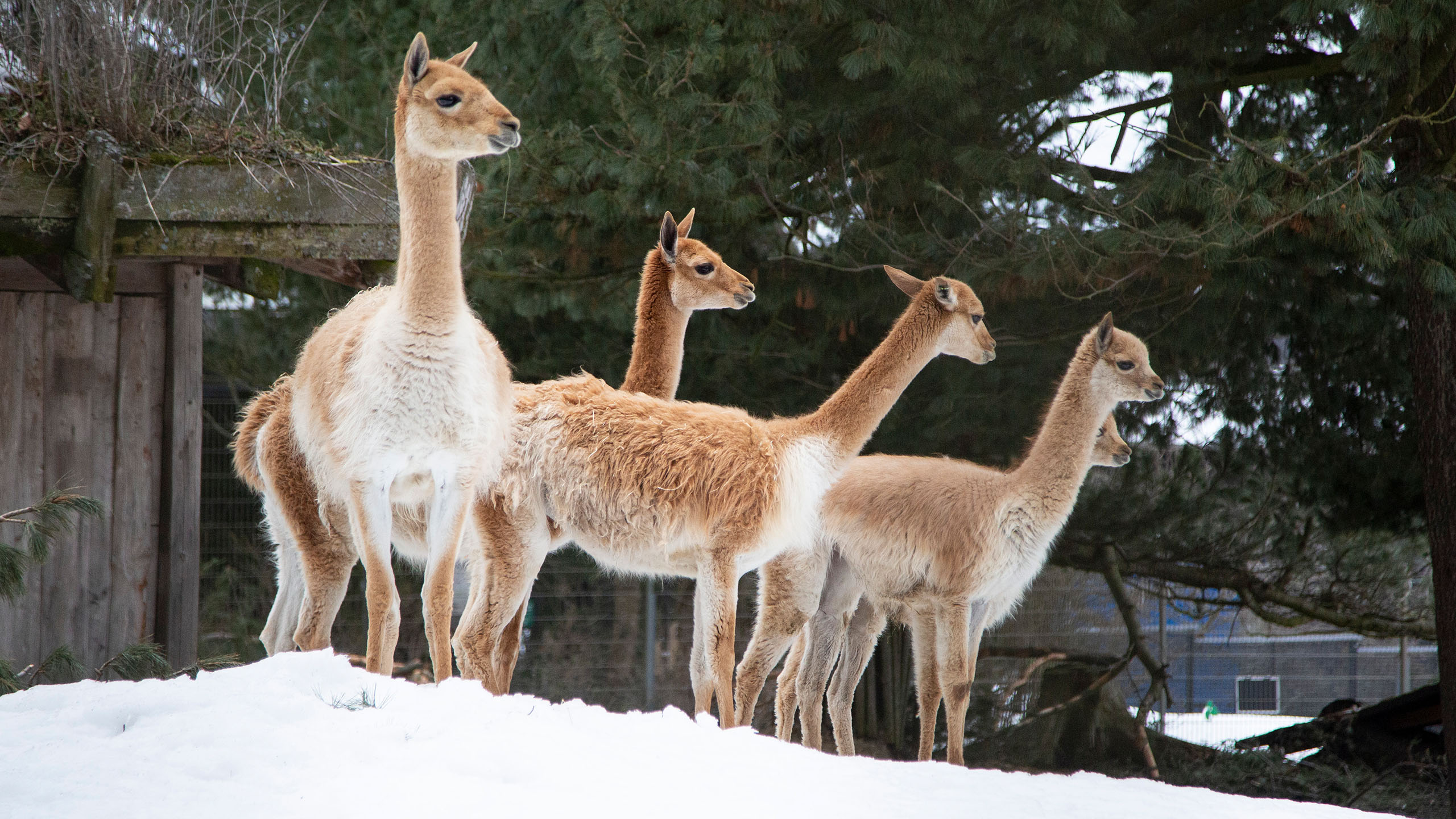
Vicuna
Vicugna vicugna
The slender vicuna is a camelid that is perfectly adapted to the harsh conditions of the towering Andes. Its lower front teeth grow constantly. The teeth wear down because of the coarseness of the mountain plants on which this animal feeds.
Vicunas live in harem-like herds that are constantly vigilant. Thanks to their excellent vision, these animals can spot danger at great distances. In emergencies, vicunas extend their neck and sprint away at speeds reaching 50 km/h. They can also defend themselves by kicking and spitting.
Vicuna males boast to each other with their long chest hairs. The vicuna’s fine wool has been valued since the time of the Inca, when it was reserved for use by monarchs and nobles. Commoners had to use the wool of the guanaco, which has long, coarse hairs mixed in with its soft wool.
Conservation
Prior to the arrival of European colonialists, the vikuña was a common species, but the colonialists’ greedy hunting practices reduced the population significantly. In the 1950s, the vikuña population was around 400,000 specimens, while ten years later it was only 6,000. The species was later placed under protection and its trade was prohibited. Nowadays, the vikuña population has slowly begun to recover.
Vicuas have not been successfully protected from poaching, and they compete with sheep for scarce pastures. In addition, climate change may change the vicuna’s natural habitat.
This species and the individuals living in Korkeasaari Zoo are part of an ex-situ conservation programme by the European Association of Zoos and Aquaria EAZA, known as the EEP.
